Lewis Ashfield
Year of birth: 1999
Where do you live: Wolverhampton, England
Your education: Bachelor’s in Graphic Design, Master’s in Digital & Visual Communications
Describe your art in three words: Evolving. Randomness. Experimental
Your discipline: Mixed Media Graphic Designer
Instagram
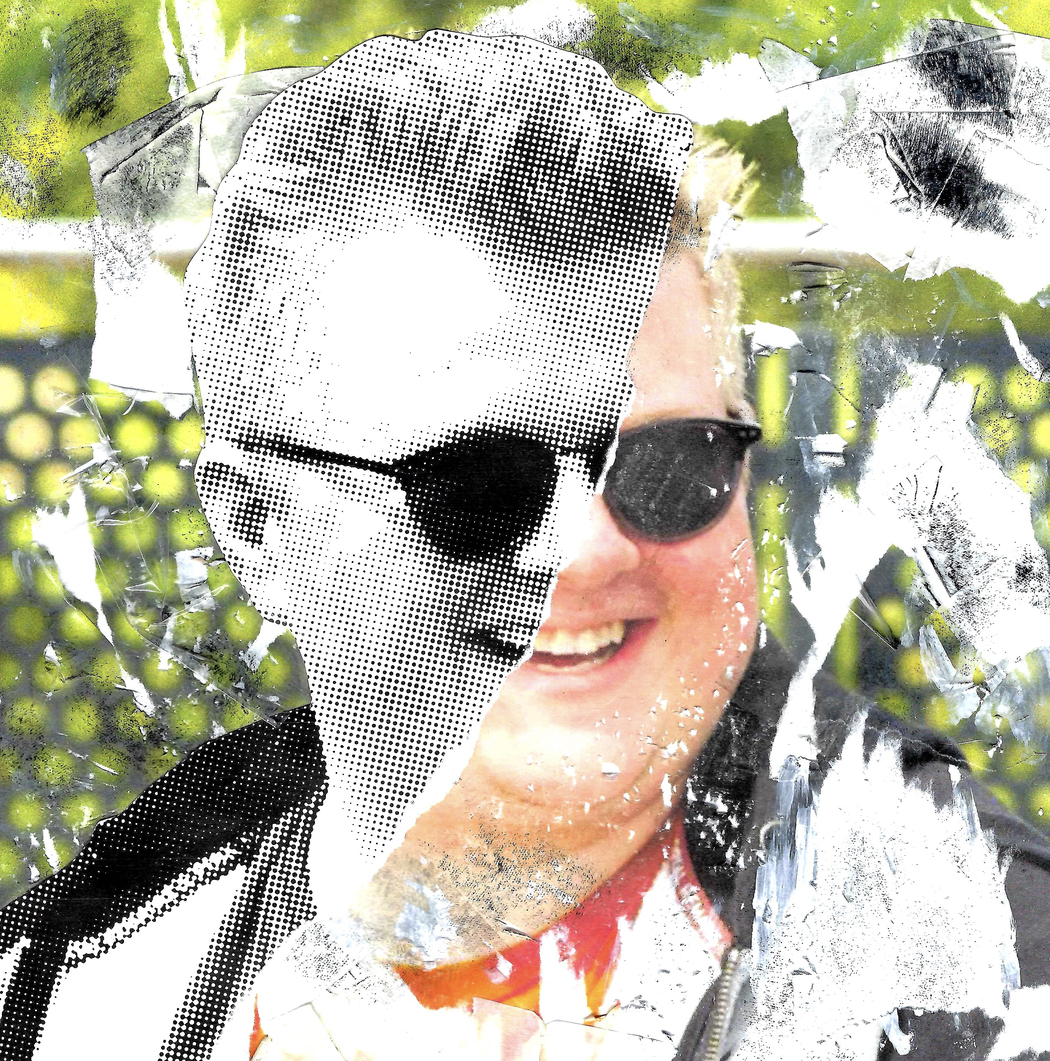
Can you tell us about your journey from Graphic Design to mixed media collage? What inspired this shift in your creative practice?
My creative journey in graphic design started when I began studying for my undergraduate and postgraduate degrees at the University of Wolverhampton: School of Art. Initially, I started with a foundation course which helped me find my footing as a creative arts student, where I was introduced to art disciplines and history, amongst other things. After completing the foundation course, I began studying for my Bachelor’s in Graphic Design. During my undergraduate studies, I was able to develop the skills I had learnt during the foundation course whilst learning how to think like a designer – generating ideas and concepts, understanding and picking apart design briefs to meet expectations and spot any opportunities where the brief can be expanded upon.
My undergraduate studies were very digital-based, I had a sketchbook but that was it. Towards the end of my undergraduate degree, I was starting to develop an interest in punk and grunge design – I tried to create work in the mentioned styles but digitally as I felt like didn’t have the confidence as a creative to break away to make them traditionally.
After working digitally during my undergraduate studies when I started to study for my Master’s I wanted to avoid working digitally if possible, deciding to work more traditionally. What started this change was the freedom of being able to experiment with different art disciplines during my studies and, when I watched the Brett Morgen film, Moonage Daydream about one of my favourite musicians and creatives David Bowie. I found this film to be very influential in shifting my creative practice from graphic design. As I watched the film, I found myself inspired to change and push myself out of my comfort zone, pushing the boundaries of what I can achieve as a creative – something which Bowie frequently did throughout his career.
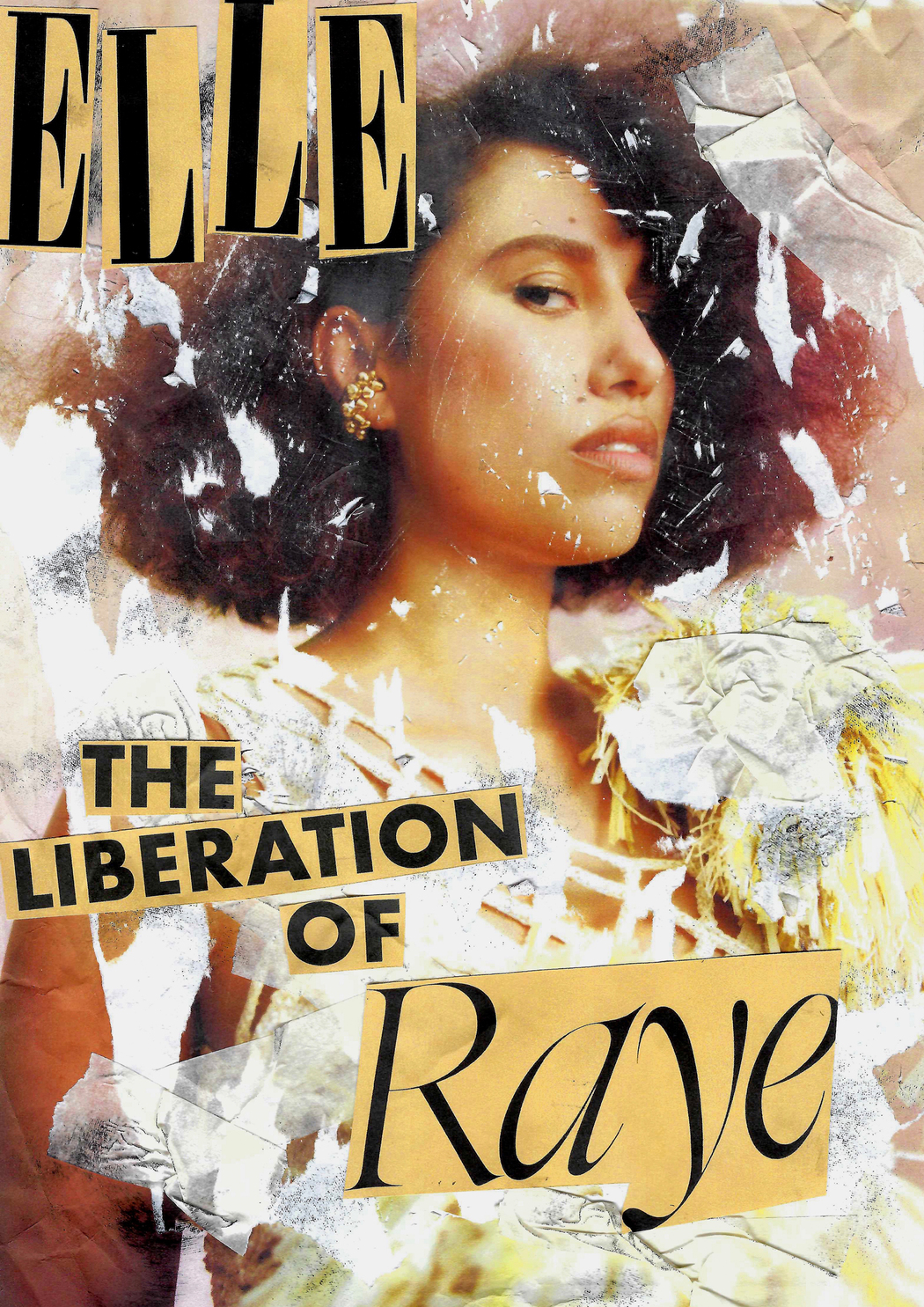 Lewis Ashfield, Raye’s Liberation, 2023
Lewis Ashfield, Raye’s Liberation, 2023
You mentioned that unpredictability and chance play a significant role in your work. Can you explain how you incorporate these elements into your creative process?
Whenever I start to create a collage, I sketch out how I might want my collage to look then I begin to review social media, online articles, and editorial photoshoots which would form the basis of a collage. My ‘tools’ consist of an ink stamp pad, Tippex, tape (Sellotape, packaging, etc) and a glue stick (I find using sprayable adhesive glue stains the paper and not in a good way!). In terms of unpredictability, tape plays the biggest role within my artwork as I use it to create texture by ripping the top layer of the paper once it has been ‘stained’ with the ink stamp pad, I can’t control the angle the paper gets damaged from the tape; same principle with the ink stamp pad I stamp it down at various point on the page quickly not caring how much pressure I apply. The role of chance within my work relates to when I rip up a printed image as I can’t control the paper, how that rips is purely down to chance/randomness.
How did your time studying for your Master’s in Digital and Visual Communications shape your artistic approach and philosophy?
Whilst studying for my Master’s I was able to develop myself as a creative by experimenting with different art disciplines – I particularly found interest in the fine arts (practitioners, influences, movements, etc). I was able to develop myself as an artist by broadening my research knowledge by adopting some of the knowledge of the fine arts. One creative I came across was Beat Generation author, William S. Burroughs, (whilst not traditionally known within the fine arts, his style of incorporating randomness into his work helped influence my creativity) whose writing style was known to use a ‘cut up’ technique – chopping up sentences to create new sentences no matter how bizarre they sound. An example of this is the track Moonage Daydream by David Bowie and Burroughs’s fantastic novel, Naked Lunch. I found myself drawn to the Theory of Chance a term which was coined by French artist and sculptor, Marcel Duchamp, his take on ‘Chance’ was seen as “a procedure that is seen as an act of randomness” something which is evident in my use of paper tears.
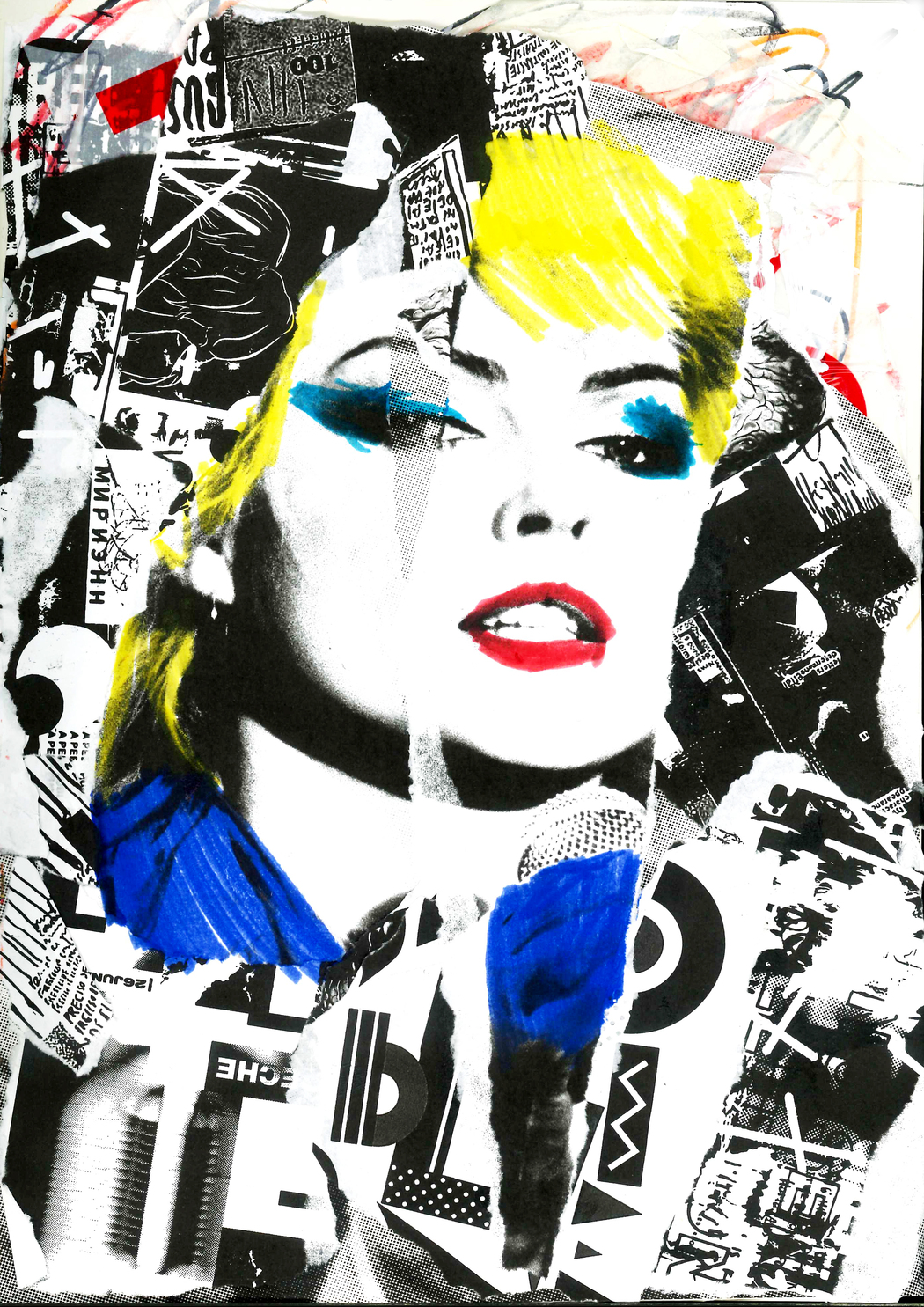 Lewis Ashfield, Blondie, 2022
Lewis Ashfield, Blondie, 2022
Paper tears are a distinctive feature of your collages. What do they symbolise for you, and how do they contribute to the overall message of your artwork?
The paper tears are a prominent feature in my artwork, I feel like I must include them in some way otherwise it looks a bit too ‘clean’. I believe they don’t symbolise anything however they do contribute to my overall artist approach of incorporating unpredictability and chance. I like to think it’s also a nice reference to the artists and movements that inspired me.
You quoted David Bowie, saying, “I don’t know where I’m going from here, but I promise it won’t be boring.” How does this idea of unpredictability reflect in your future projects?
I love that quote from David Bowie, I believe everyone can take something away from it (creative or not). Not many people can say they know exactly where we’re going in life even from a young age, the majority of us are finding our way and discovering ourselves day by day. This quote relates to my project work; I don’t know what I am going to be working on next, I’ve got ideas floating around my head constantly but I can’t say when I’m going to work on those by pinpointing a date.
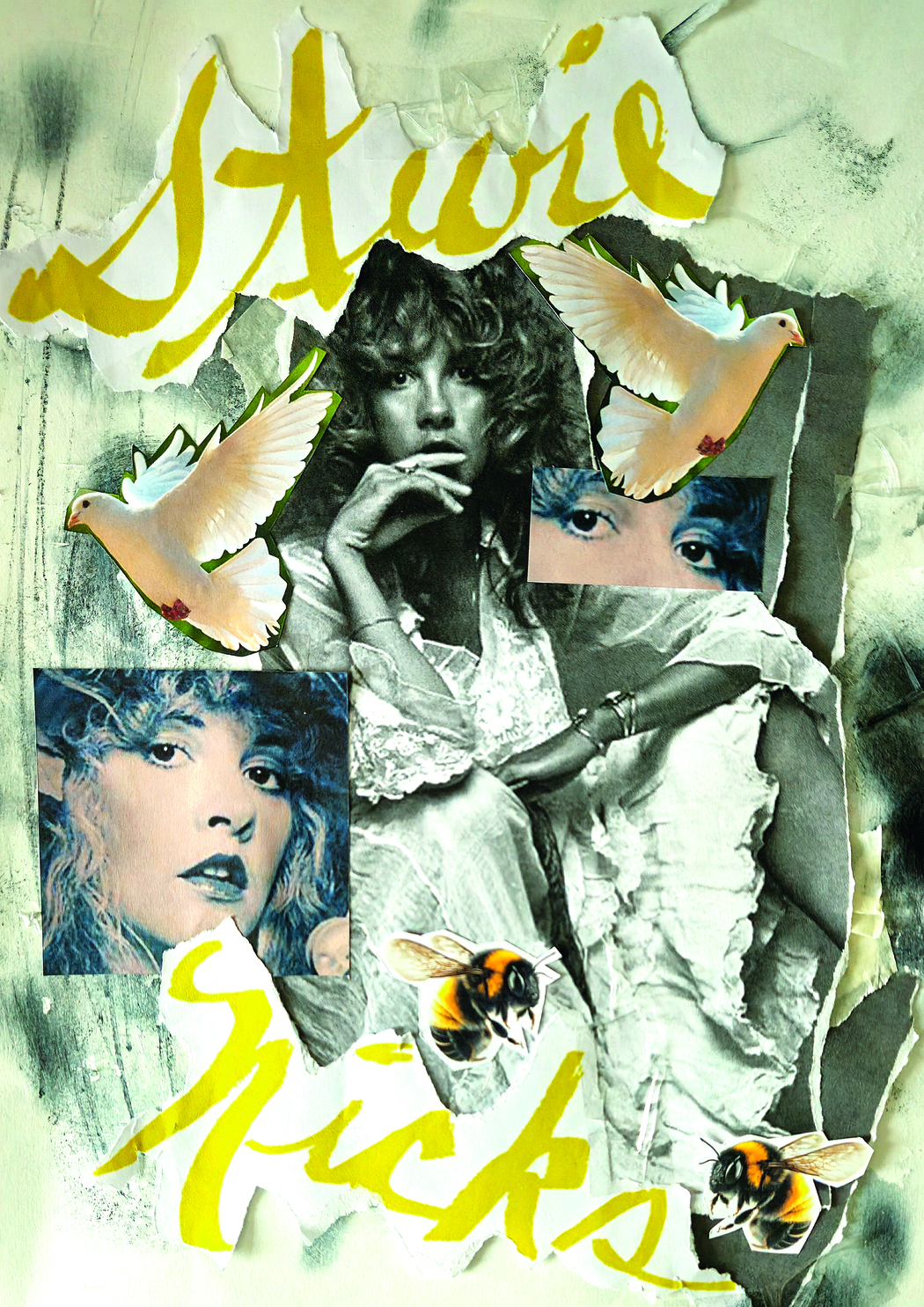 Lewis Ashfield, Rhiannon, 2024
Lewis Ashfield, Rhiannon, 2024
What artists or creative figures have had the most significant impact on your work and why?
I would have to say, David Bowie. His creativity has had the biggest impact on my practice, especially after watching the Moonage Daydream film, I always knew Bowie experimented with music genres, personas, and art but I didn’t know he was the master of experimentation – pushing his work and himself to new creative boundaries. I have delivered a handful of workshops and presentations about my art and my practice; I always try to quote or reference Bowie’s artistry in some way – paying tribute to one of my biggest heroes.
Another artist who has had a significant impact on my practice is, punk anarchist legend, Jamie Reid. It still breaks my heart that he is no longer with us. You will probably know his work from the punk movement in the 1970s, particularly the Sex Pistols – Never Mind the Bollocks… Here’s the Sex Pistols album cover. His practice was rooted in working analogue, using a photocopier, scalpel knife, glue, scissors and paint. I was lucky enough to contact Reid as I was going to interview him for my final project at the Master’s however, he passed away before he could respond to my questions.
Other creatives who have influenced my work (as a Graphic Designer and as a Mixed Media Artist) are:
Chris Ashworth – British Graphic Designer whose work focuses on ‘Swiss Grit’, taking Swiss typography and destroying the type aka adding grit.
Patti Smith – Musician, writer and poet. Her writing and outlook on creativity inspire me to keep working and doing what I love.
Paula Scher – the Queen of Graphic Design in my opinion. Scher’s work influenced the entirety of my time as a graphic design student and continues to inspire me as a Graphic Designer.
Portis Wasp – Scottish collage Artist, who creates collages digitally and is inspired heavily by fashion and celebrity culture.
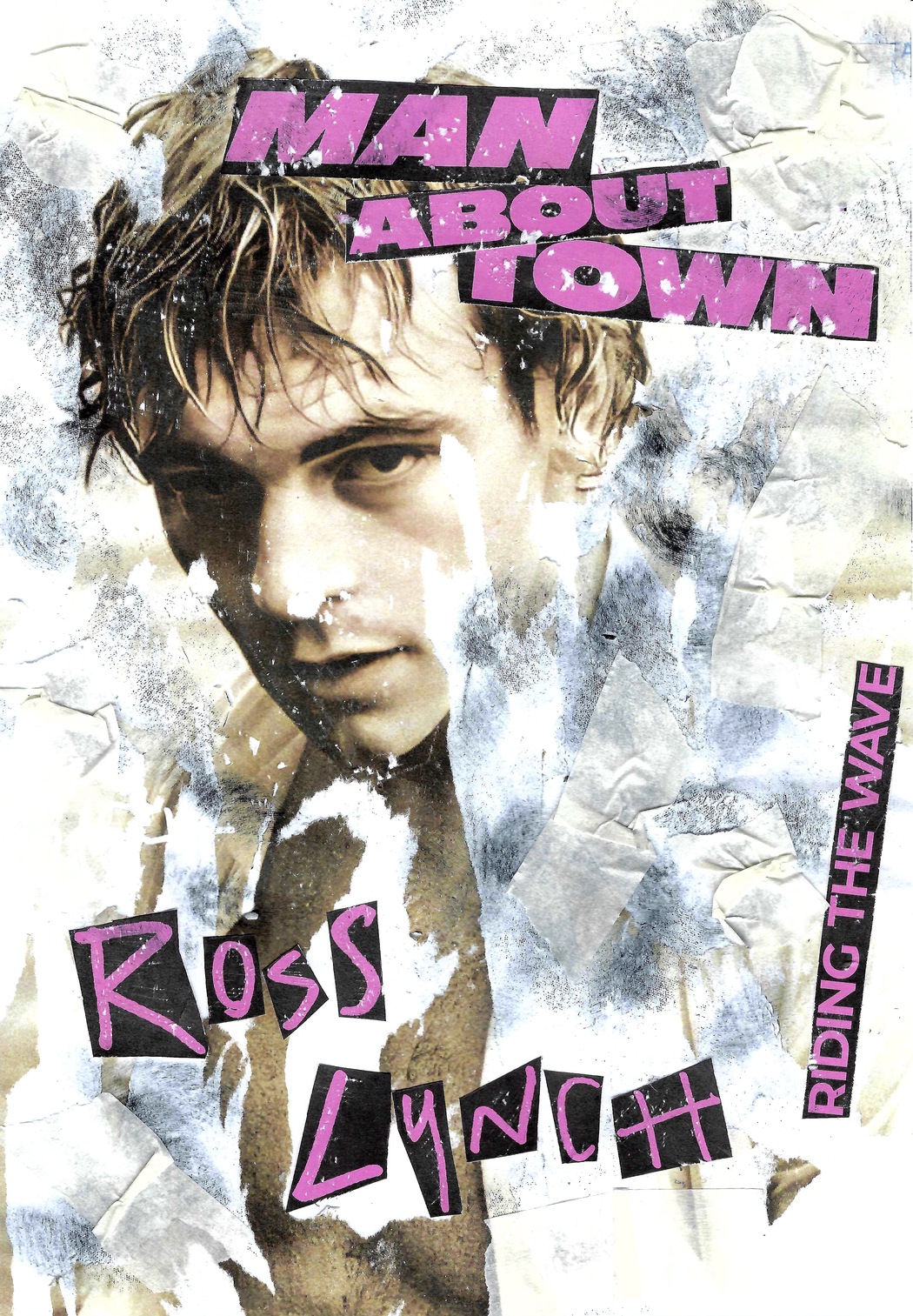 Lewis Ashfield, Riding The Waves, 2024
Lewis Ashfield, Riding The Waves, 2024

Leave a Reply
You must be logged in to post a comment.